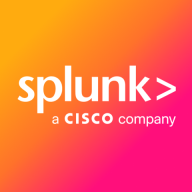

Splunk Enterprise Security and Graylog Security are competing in the security information and event management market. Splunk Enterprise Security seems to have the upper hand with its comprehensive analytics capabilities and integrations. Graylog Security provides a more budget-friendly option, with effective log management features.
Features: Splunk Enterprise Security offers advanced threat detection, customizable dashboards, and extensive integration capabilities, allowing adaptability for various use cases. Graylog Security focuses on log management and simplicity, offering ease of use and quick access to logs, as well as flexibility in log storage and retrieval.
Ease of Deployment and Customer Service: Splunk Enterprise Security typically requires a significant infrastructure investment and expertise for deployment, though it provides strong support resources and professional services. Graylog Security has a straightforward deployment process that is less resource-intensive, making it suitable for smaller teams to manage. Graylog's community support assists in solving technical challenges effectively.
Pricing and ROI: Splunk Enterprise Security involves significant upfront and ongoing costs, reflecting its extensive features, but it can deliver high ROI through robust insights and scalability. Graylog Security offers lower initial costs and a more cost-effective approach, promising quicker ROI for budget-conscious organizations. Graylog's pricing model is appealing for those seeking essential SIEM functionalities without substantial investments.
| Product | Market Share (%) |
|---|---|
| Splunk Enterprise Security | 8.0% |
| Graylog Security | 0.6% |
| Other | 91.4% |

| Company Size | Count |
|---|---|
| Small Business | 109 |
| Midsize Enterprise | 50 |
| Large Enterprise | 263 |
Graylog Security is designed for log management and analysis, assisting in monitoring security events, detecting threats, providing real-time alerts, and aiding troubleshooting and forensic investigations. Its scalability and customizable dashboards support IT departments in maintaining system performance and ensuring compliance.
With exceptional log management capabilities and powerful search functions, Graylog Security is reliable for threat hunting, integrating with other tools, and offering a user-friendly dashboard. Organizations value it for quickly analyzing large datasets and providing detailed insights into security events. However, better documentation and clearer instructions for new users, more efficient alerting capabilities, easier scaling, and enhanced support options could improve user satisfaction.
What are the most important features of Graylog Security?Graylog Security is implemented across diverse industries, including healthcare for patient data protection, finance for transaction monitoring and fraud detection, and retail for safeguarding customer information. Each industry leverages its detailed analytics and real-time alerting to meet specific regulatory and operational standards, ensuring a secure and compliant environment.
Splunk Enterprise Security delivers powerful log management, rapid searches, and intuitive dashboards, enhancing real-time analytics and security measures. Its advanced machine learning and wide system compatibility streamline threat detection and incident response across diverse IT environments.
Splunk Enterprise Security stands out in security operations with robust features like comprehensive threat intelligence and seamless data integration. Its real-time analytics and customizable queries enable proactive threat analysis and efficient incident response. Integration with multiple third-party feeds allows detailed threat correlation and streamlined data visualization. Users find the intuitive UI and broad compatibility support efficient threat detection while reducing false positives. Despite its strengths, areas such as visualization capabilities and integration processes with cloud environments need enhancement. Users face a high learning curve, and improvements in automation, AI, documentation, and training are desired to maximize its potential.
What Are the Key Features of Splunk Enterprise Security?In specific industries like finance and healthcare, Splunk Enterprise Security is instrumental for log aggregation, SIEM functionalities, and compliance monitoring. Companies leverage its capabilities for proactive threat analysis and response, ensuring comprehensive security monitoring and integration with various tools for heightened operational intelligence.
We monitor all Security Information and Event Management (SIEM) reviews to prevent fraudulent reviews and keep review quality high. We do not post reviews by company employees or direct competitors. We validate each review for authenticity via cross-reference with LinkedIn, and personal follow-up with the reviewer when necessary.